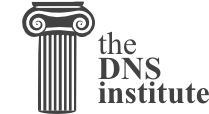What does DNSSEC Add to DNS?
Primer on Public Key Cryptography
Public Key Cryptography works on the concept of a pair of keys,
one is made available to the world publicly, and one is kept in secrecy
privately. Not surprisingly, they are known as public key and private
key. If you are not familiar with the concept, think of it as a cleverly
designed lock, where one key locks, and one key unlocks. In DNSSEC, we
give out the unlocking public key to the rest of the world, while
keeping the locking key private. To learn how this is used to secure DNS
messages, take a look at the section called “How are Answers Verified?”.
DNSSEC introduces six new resource record types:
- RRSIG (digital signature)
- DNSKEY (public key)
- DS (parent-child)
- NSEC (proof of nonexistence)
- NSEC3 (proof of nonexistence)
- NSEC3PARAM (proof of nonexistence)
This guide will not dissect into the anatomy of each resource record
type, the details are left for the readers to research and explore. Below is a
short introduction on each of the new record types:
- RRSIG: With DNSSEC enabled, just about every
DNS answer (A, PTR, MX, SOA, DNSKEY, etc.) will come with at least one
RRSIG, or resource record signature. These signatures are used by recursive
name servers, also known as validating resolvers, to verify the answers
received. To learn how digital signatures are generated and used, see the section called “How are Answers Verified?”.
- DNSKEY: DNSSEC relies on public key
cryptography for data authenticity and integrity. There are several keys
used in DNSSEC, some private, some public. The public keys are published to
the world as part of the zone data, and they are stored in the DNSKEY
record type. In general, there are two categories of keys used in DNSSEC,
Zone Signing Key (ZSK) is used to protect all zone data, and Key Signing
Key (KSK) is used to protect other keys. We will talk about keys in the section called “Generate Keys Explained”, and again later in the section called “Key Generation”.
- DS: One of the critical components of DNSSEC
is that the parent zone can "vouch" for its child zone. The DS record is
verifiable information (generated from one of the child's public keys) that a
parent zone publishes about its child as part of the chain of trust. To learn more
about the Chain of Trust, see the section called “Chain of Trust”.
The NSEC, NSEC3, and NSEC3PARAM resource records all deal with a very
interesting problem: proving that something really does not exist. We will
look at these record types in more detail in the section called “Proof of Non-Existence (NSEC and NSEC3) ”.
